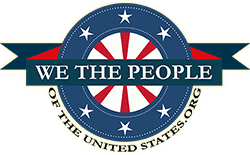You’ve googled Jewish or Israel related questions and more likely than not have been directed to the Jewish Virtual Library within the first page of your search. But who created it? What is it’s real purpose?

Mitchell Bard, analyst, editor, and Foreign policy aficionado, with a PhD in Political Science from UCLA, Masters in Public Policy from Burkeley, and a BA economics from UC Santa Barbara. He has written or edited 24 books, including a novel After Anatevka: Tevye in Palestine, and has lectured widely on campuses and communities and been published in major magazines and academic journals. Bard is the man who created the Jewish Virtual Library, which is published by his company, the American-Israel Cooperative Enterprise.
The American-Israeli Cooperative Enterprise (AICE) was established in 1993 as a nonprofit and nonpartisan organization to strengthen the U.S.-Israel relationship by emphasizing the fundamentals of the alliance — the values our nations share.
In the dark ages of the internet that was the 1990’s, Bard became aware that books were no longer the number one place young people went to for information. “The internet was the source of all knowledge,” says Bard, “But around 1997 there was little information” and what little there was was hard to find and not very good. “Sites weren’t easy to navigate and the material wasn’t credible. So it occurred to me, that we should try to provide students specifically, which was the original target, with the information they should know about Israel.”

“Everyone was starting to get on the web, and creating primarily organizational websites, but I was more interested in a substantive site, we originally called it the Jewish Online Resources Center. What I did was take myths and facts, take out the myths and put up the facts about Israel.” Bard is also the author of Myth and Fact: A guide to the Arab-Israeli Conflict first published in 2002 and an updated version released in 2011, which can be found on the JVL website.
Back in the 1990’s everyone was just starting to get on the web, and “creating primarily organizational websites” as tells Bard, “But I was more interested in a substantive site.” The original substantive site was called the Jewish Online Resources Center, becoming the Jewish Virtual Library in the early 2000’s. “I also wanted to avoid another trend that had started at the outset of the internet age, which was creating portals, so that you would go to a site and there would be a gazillion links, and you were sent hither and yound
Bard reached out to various Jewish and Israel related organizations and websites and asked permission to use their materials on his site. On the JVL website readers can find tons of different pages and information which have source citations leading to other websites. “There [is] always a line back to their site” and they always ask permission. This was a great move as it increased their visibility and increased the website traffic and the traffic of the websites they got permissions from.
It was around then that Bard realized that the same topics that applied to Israel applied to all topics of Jewish interests, holidays, antisemitism, the Holocaust, etc. “It created a monster,” tells Bard jokingly, because there were so many articles to write and no way to do it by himself, or copying it from other sites. There was also the daily news that was relevant and happened and changed daily, “So I understood from the beginning that there were certain limitations. I wanted to at least be able to cover the most important topics that students wold be interested in learning about, as an academic I was also interested in ensuring that the material was credible and wanted to get materials that no one else had, original documents.”
Getting original documents was no easy feat, but he tried to get as much as possible from the Israeli government, from the US State Department, Medieval Sources, anything that was a primary, relevant source. Not just articles.
“The philosophy was that this was going to be an encyclopedia, in the sense that it was going to be as objective as possible. I wanted to try to keep things as straight and factual as possible.” This seems to be quite true. The readings on the website are neutral and do not hold opinions, they are a play by play of the facts with sources to other pages or other websites to look at.
“I think we have a pretty good reputation and teachers tell me that our website is one of the only ones they will allow their students to quote.” Teachers from high schools and college professors appreciate the hard facts encompassed in the JVL and allow their students to use it as a resource in their papers and projects.
Over the years the JVL has expanded to cover many different areas and Bard works hard to make sure that there are maps for reference and has made many attempts to get photographs to incorporate into the various pages. “We’ve been contacted by the families of Holocaust survivors or of soldiers, who took their own photos.” One example are photos from one of the concentration camps, some of which hadn’t been shared with others, taken by the concentration camp liberators. AICE are contacted on a daily basis with questions and inquiries: “Was Hitler Jewish?” and “Why do Jews put stones on Graves?” Those questions with the answers found their way on the website early on and others continue to pour in. The site has grown tremendously since its launching in 1998. Last year the website was averaging a million visitors a month, truly a great accomplishment.
AICE also gained permission to take a look at a book published by the Library of Congress, which was a collection of Judaiac treasure that the library has, the JVL then put the book up on their site, with the treasures and their description.
Now undergoing major redesign to be more friendly to smart devices, Bard’s plan is to relaunch the site before the end of the year.
Keep an eye out as the new site launches. Bard hopes to add more primary documents to the website, and wants to have declassified CIA documents, British archive materials and more. British and American government sources, as tells Bard, would be a great asset because of the information they reveal about the inner workings of the two governments respectively. This too will take a lot of time, ” I think there are other places where we can enhance things, more we can write about different parts of Israel, add to Israel experience, tour of Israel, more information about Jewish communities around the world. Get bigger and better, more videos more photos, recipes…”
The website will continue to expand, as the different innovating and creative initiatives Bard takes on, from placing Israeli professors in American universities, to countering misinformation by the BDS, we are only seeing the beginning of the potential of the JVL and AICE.
Thus, the next time you have a nagging question about that one Israeli Prime Minister, or to understand the inter-political framework that led to Israel’s Independence, or you really want to know about Klezmer music, the Jewish Virtual Library is your number one source of information.


Leave A Comment